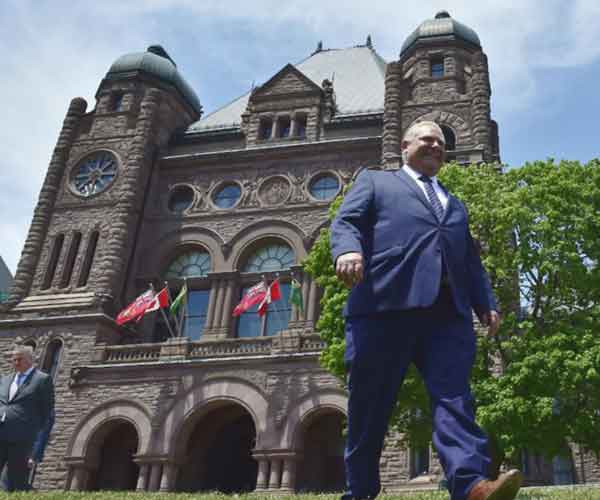It’s done. Ontario’s cap-and-trade program is no more.
You might be asking, what is cap and trade? Why should I care? What led to this? Well, you are in luck—as we put together a timeline of stories that explain the drama till the very end.
First off, what is “cap-and-trade”? and why should I care?
Cap-and-trade is a market-based system designed to limit greenhouse gas emissions by business and industry.
Just so you know, climate change is caused by the increase in concentrations of greenhouse gases in the atmosphere. Greenhouse gases trap heat making the planet warmer, hence causing a change in our climatic systems.
There is a hard cap on the amount of greenhouse gasses allowed, and companies are issued permits for emissions by the government. If they produce less emissions than their permits allow, they can sell the excess and companies that produce more than their permits allow, can buy these permits.
The program encourages the private sector to determine the most cost-effective way to meet standards while reducing the cost incurred per year.
The EU, for example, has been very successful in implementing this program, and advocates of the program say its better than a tax—because it ensures a certain level of cuts, year-over-year.
The Ontario Ford government has introduced legislation to terminate and replace the program in the province claiming it will save families money through energy and fuel costs as well as “indirect costs” that were a result of the program.
This is highly debatable and has been extensively explored in this article.
Anyways, a lot happened before we got here, so if you missed what transpired, below—you’ll find some useful reading to bring you up to speed on how it all went down:
Doug Ford axes GreenON program that provided rebates for energy-conscious homeowners
Incoming premier Doug Ford is scrapping the GreenON program, which provided incentives like free smart thermostats to those looking to make their homes more energy efficient. Ford, who is set to be sworn in on June 29, has already announced plans to end Ontario’s cap-and-trade program, which funded GreenON and a number of other initiatives.
The end of the program, launched at the end of 2017, means homeowners will lose the chance to qualify for thousands of dollars worth of rebates on a number of improvements, from windows to insulation to solar equipment.
Ford ousts Hydro One boss and the utility’s board of directors
Premier Doug Ford has zapped the Hydro One boss he dubbed “the $6 million dollar man” without an expected $10.7 million severance payment and is replacing the company’s board of directors.
Chief executive Mayo Schmidt, whom Ford promised to fire during the June 7 election campaign over his $6.2 million annual compensation, is taking “retirement” with a $400,000 lump sum, Hydro One said.
Ontario’s New PC Government Is Canceling 758 Renewable Energy Contracts
Ontario’s new Progressive Conservative government is canceling 758 renewable energy contracts, in what it says is an effort to reduce electricity bills in the province.
In a news release statement, the Minister of Energy, Northern Development and Mines Greg Rickford said “Ontario ratepayers will benefit from $790 million in savings,” a figure industry officials dispute, saying it will just mean job losses for small businesses. The release mentions that all of the canceled projects have not yet reached project development milestones.
Ontario introduces legislation to kill cap-and-trade program
Ontario’s new Progressive Conservative government has tabled legislation to kill the province’s cap-and-trade program, which put a price on carbon emissions, but will pay virtually no compensation to the companies that purchased $2.9-billion in emission allowances under the plan.
In a news conference Wednesday, Environment Minister Rod Phillips said most of the allowances were acquired to cover the companies’ regulatory obligations over the past two years, so there is no need for compensation. However, many firms bought additional emissions permits on the assumption that prices would rise over the next few years and have urged the government to work with them to set a fair reimbursement.














Comments